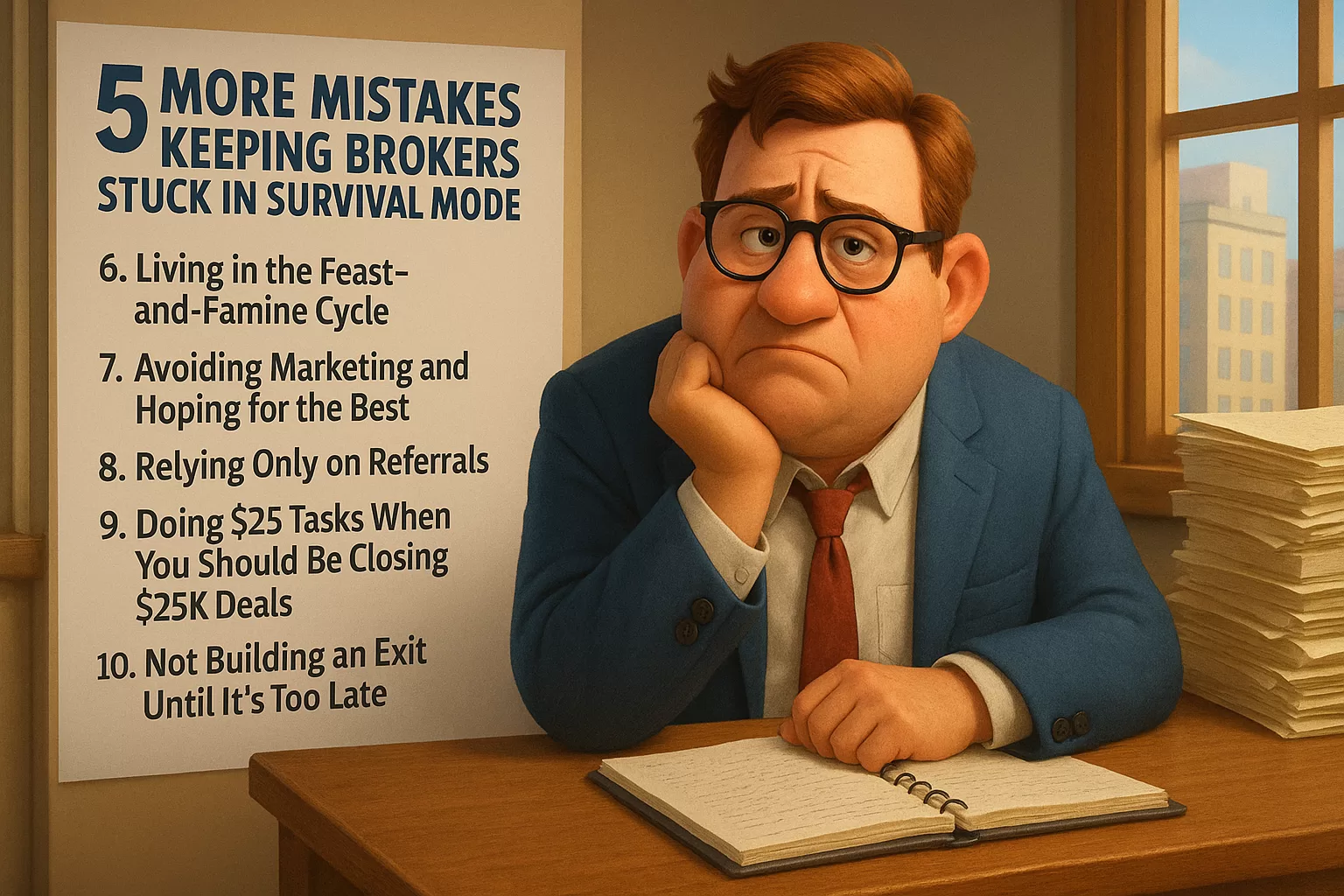The 4 Decision-Making Tools Every CRE Broker Needs to Set Better Boundaries
Let’s face it—if you’re a commercial real estate broker, your calendar is always under attack.
A client wants to “pick your brain.” A tenant calls last-minute asking to tour five buildings you already know aren’t a fit. A developer wants input on a site they’ll never commit to. It’s easy to feel flattered, obligated, or like saying yes will build goodwill. But when you say yes to everything, you end up saying no to your own pipeline, focus, and income.
Saying “no” gracefully isn’t just polite—it’s strategic. It keeps you focused on high-leverage activities, protects your mental energy, and positions you as a professional, not a people-pleaser.
Here are four proven frameworks for CRE brokers to say no—without guilt or regret.
1. The Eisenhower Matrix
“What is important is seldom urgent and what is urgent is seldom important.” – Dwight Eisenhower
The Eisenhower Matrix helps you separate your to-do list into four quadrants:
-
Urgent + Important – Do it now.
-
Not Urgent + Important – Schedule it.
-
Urgent + Not Important – Delegate it.
-
Not Urgent + Not Important – Say no.
CRE Example:
You get a cold call from a prospect who’s “just looking” and wants a tour tomorrow. They’re pre-lease, vague on budget, and have no clear plan. That’s Urgent but Not Important—delegate the initial intake to a junior agent, or politely defer.
Instead, use that time to prep a pitch for a serious client meeting next week (Important, Not Urgent). This matrix keeps you focused on deals that actually close.
2. The 80/20 Principle
“80% of your results come from 20% of your efforts.” – Pareto Principle
This model helps you identify which clients, listings, or networking events generate real ROI—and which ones burn time.
CRE Example:
You look at your pipeline and realize 80% of your commissions last year came from five clients. The rest? Window shoppers, tire-kickers, or clients who ghosted at LOI. Start saying no to anything outside your top 20%. That might mean declining coffee meetings, opting out of over-networking, or even dropping difficult clients who drain you.
Use this principle to guard your time like it’s equity—because it is.
3. The 2-Minute Rule
“If it takes less than two minutes, do it now. If it doesn’t, schedule it or say no.”
This one is perfect for managing email, DMs, or surprise asks. If it’s a fast favor, get it off your plate immediately. If not, assess its priority.
CRE Example:
A broker you barely know wants your opinion on a 40-page pro forma. That’s a hard no (or a soft redirect). You could say:
“Hey, this is more than I can take on right now, but I’d be happy to glance at the summary if you email it.”
The goal is to avoid letting other people’s disorganization hijack your day.
4. Warren Buffett’s 25/5 Rule
“The difference between successful people and really successful people is that really successful people say no to almost everything.”
Buffett’s rule is simple:
-
Write down your top 25 goals.
-
Circle the top 5.
-
Avoid everything else like the plague.
CRE Example:
You’ve got a clear goal: lease 100,000 SF of biotech space in the next 6 months. You’ve also been invited to speak at a non-relevant real estate panel, join a “fun” project with no commissions, and co-market a space outside your niche.
If those aren’t in your top 5 priorities, they’re distractions. Be polite, but firm. Say no with clarity, and let your focus do the talking.
Saying No with Grace (So You’re Still Respected)
Here are some examples tailored for brokers:
-
“I’d love to help, but my focus right now is on active client projects.”
-
“I can’t take this on directly, but I’m happy to refer someone who can.”
-
“Thanks for thinking of me, but I have to decline to stay focused on current mandates.”
-
“I’m not the best fit for this, but I appreciate the opportunity.”
Too many brokers confuse being available with being valuable.
When you say yes to every showing, every favor, every event—you spread yourself too thin to win. Learning how to say no is a superpower.
The Eisenhower Matrix helps you sort urgency from importance.
Most client requests aren’t urgent and important. Decide what gets your focus, what can wait, and what deserves a no.
The 80/20 Rule and Buffett’s 25/5 Rule sharpen your priorities.
Double down on your top-performing activities and ruthlessly cut the rest. Focus isn’t selfish—it’s professional.
Use these tools to protect your time, your mental energy, and your bottom line.
You’ll gain more respect, close better deals, and build a business you actually enjoy.



